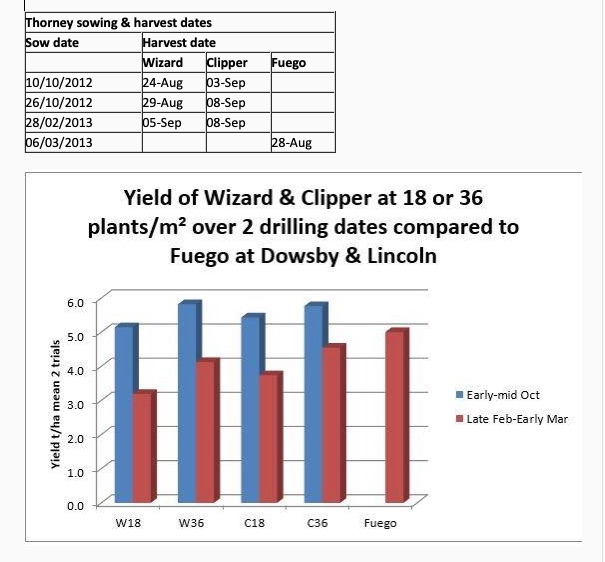“Undoubtedly, growers are asking questions about winter bean sowing windows, bringing back memories of the winter of 2012/2013,” said the PGRO.
Due to the similar conditions seen seven years ago, trials were carried out to investigate how late is too late for winter beans.
In 2012 a small number of previous trials indicated that they could be grown when planted in the spring – but to treat them as a spring bean, increasing the plant population to more like that of spring beans (typically 40 plants/m²).
PGRO winter bean trials 2012/13 suffered the same fate as commercial plantings and this gave an opportunity to gather some concrete data. As part of the Optibean project, winter bean varieties Wizard and Clipper were sown at three sites, at four populations and and at three sowing dates.
“Winter beans sown in the spring were not a disaster, even at 18 plants/m².”
- On average, winter beans Wizard and Clipper sown in the spring at 18 plants/m² gave a 34% yield reduction compared to autumn sowings at the same population.
- This yield reduction was lowered to 18% on average by planting 36 plants/m² in the spring compared to 18 plants/m² in the autumn.
- Spring sown winter beans at 36 plants/m² did not match the yield of spring sown Fuego, with Wizard and Clipper yielding 83% and 90% of Fuego respectively.
- Autumn sown Wizard and Clipper at 18 plants/m² yielded as well as, or a little better than, spring sown Fuego.
- End February sown Wizard matured 12 days later than mid-October drilled Wizard and 7 days later than late-October drilled Wizard.
- End February sown Wizard matured 8 days later than early March sown Fuego.
 “To stress that winter beans sown in the spring were not a disaster, even at 18 plants/m²,” added PGRO. “However, maturity is later by the order of 7-12 for days for Wizard.
“To stress that winter beans sown in the spring were not a disaster, even at 18 plants/m²,” added PGRO. “However, maturity is later by the order of 7-12 for days for Wizard.
“It must be remembered that 2013 was a late season for most crops, by about 10-14 days. The lateness of the season benefited autumn crops sown in the spring and, indeed, late sown spring crops too.”




